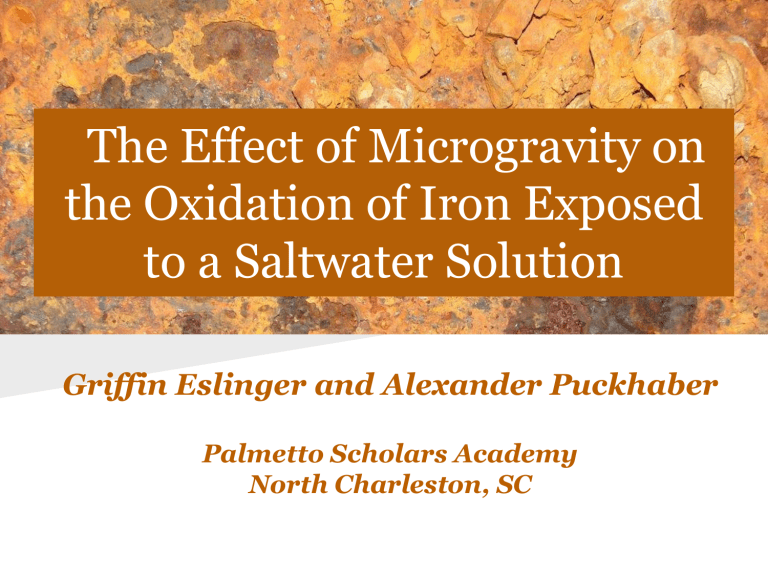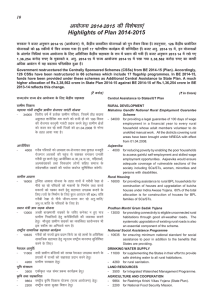The Effect of Microgravity on the Oxidation of Iron Exposed to a

The Effect of Microgravity on the Oxidation of Iron Exposed to a Saltwater Solution
Griffin Eslinger and Alexander Puckhaber
Palmetto Scholars Academy
North Charleston, SC
Description of Experiment
Our experiment will compare the structural integrity of an iron bar oxidized in the presence of saltwater in microgravity to an iron bar oxidized in the presence and absence of saltwater on Earth.
Hypothesis
We predict that the iron bar oxidized in microgravity will be weaker than the iron bar oxidized on Earth. Without gravity, the surface tension of the salt water will be stronger. Stronger surface tension in microgravity might make the oxidation process happen at a faster pace.
Materials
Experiment Materials
1.
Type Two FME (Fluid Mixture Enclosure)
2.
3.5% salt water solution
3.
Iron tensile testing bar (9.5mm by 75mm by 2mm)
Testing Materials
1. Scanning electron microscope
2. Tensile testing machine
The FME
We are using a Type 2 FME for our experiment.
Here is a model of our setup.
Experimental Setup
We will be conducting four treatments for this experiment.
1) The space-based experiment has water in the Type 2
FME container in microgravity.
2) The same setup will be used but in a lab (classroom) on
Earth. It has saltwater and the Type 2 FME container.
3) The same setup will be implemented without the saltwater. It will just have the bar in a Type 2 FME. This will test for any corrosive effects of the actual FME on the iron testing bar. It will also give a baseline of corrosion under "normal" conditions within a contained environment.
4) The same as #2, but kept in the open, to see what corrosion might happen in an open environment.
Experiment Timeline & Observations
On the day that the experiment arrives on the space station, one of the astronauts will release the clamp on the Type 2 FME. The salt water solution will make contact with the bar, and the oxidation process will begin.
When we get the FME back, we will examine the iron bar. The iron bar will be pulled apart by a tensile testing machine to test its structural integrity and scanned with a scanning electron microscope to look for any changes in the crystal structure.
Why this Experiment is Important
If we find that the iron bar oxidized in microgravity is significantly weaker than the iron bar oxidized on Earth, our findings could impact how engineers design space missions.
Many pressurized spacecraft are built with iron alloys. There would most likely be oxygen and water on the inside. If rust in microgravity causes iron to become weaker than expected, there might be a high potential for catastrophic failures.
Acknowledgments
Thank you to the Partners and Sponsors who made this experiment possible:
Partners
•
Space and Naval Warfare
Systems Command
(SPAWAR)
•
Center for the Advancement of
Science in Space (CASIS)
•
National Center for Earth and
Space Science Education
•
College of Charleston
•
Medical University of South
Carolina (MUSC)
•
National Oceanic and
Atmospheric Administration
(NOAA)
Sponsors
•
ISHPI
•
CASIS
•
Palmetto Scholars
Academy Board
Members
•
Palmetto Scholars
Academy Families








![¤ÉVÉ] BÉEÉ ºÉÉ® BUDGET AT A GLANCE 2016-2017](http://s2.studylib.net/store/data/012110760_1-96c6debd6534b4db8ef919a3e8b3b722-300x300.png)